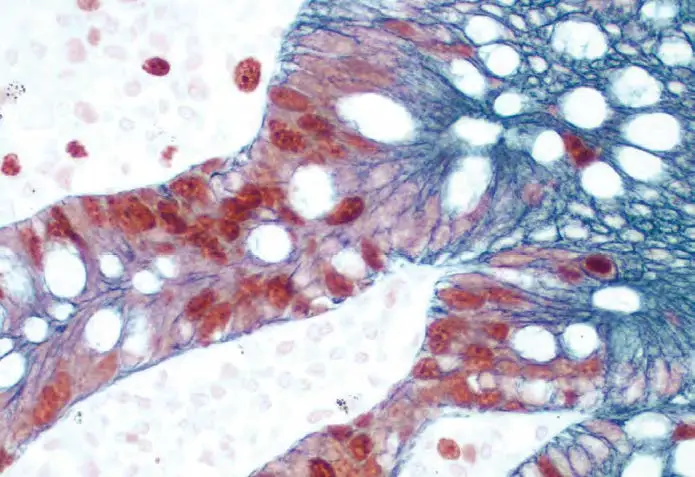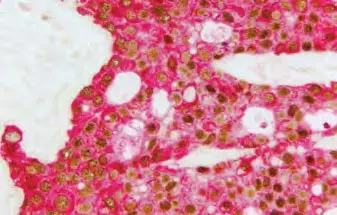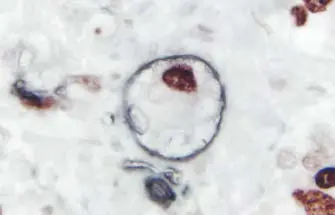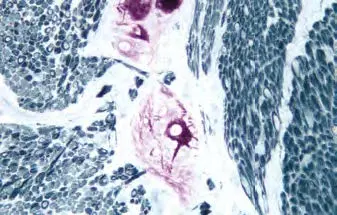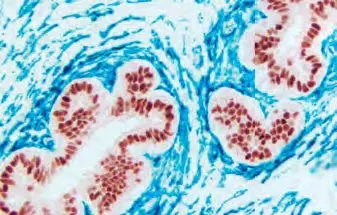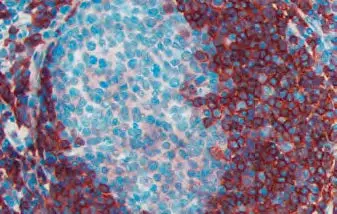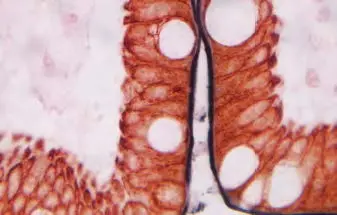Table of Contents
- Introduction
- Immunohistochemistry Workflow
- Immunohistochemistry Selection Guide
- Pioneering in IHC Technology
- Choosing a Detection System
- Avidin-Biotin Complex (ABC)-Based Detection
- VECTASTAIN® ABC Systems
- VECTASTAIN® ABC Kits
- Choosing a VECTASTAIN® ABC Kit
- > Customizing your VECTASTAIN® ABC Kit
- Polymer-Based Detection
- ImmPRESS® One-Step Polymer Systems
- > ImmPRESS® Two-Step Amplified Polymer Systems
- > Choosing an ImmPRESS® Polymer Kit
- > Multiple Antigen Labeling Simplified
- Species on Species Detection
- M.O.M.® (Mouse on Mouse) Immunodetection Kits
- Choosing an Enzyme Substrate
- Enzyme Substrates
- > Enzyme Substrate Properties
- Multiple Antigen Labeling
- Enzyme Substrate Combinations
- Counterstaining
- > Counterstain/Substrate Compatibility Table
- Blocking Background Signal
- Secondary and Tertiary Detection Reagents
- Mounting Media
- Accessory Reagents
- Introduction
- Immunohistochemistry Workflow
- Immunohistochemistry Selection Guide
- Pioneering in IHC Technology
- Choosing a Detection System
- Avidin-Biotin Complex (ABC)-Based Detection
- VECTASTAIN® ABC Systems
- VECTASTAIN® ABC Kits
- Choosing a VECTASTAIN® ABC Kit
- > Customizing your VECTASTAIN® ABC Kit
- Polymer-Based Detection
- ImmPRESS® One-Step Polymer Systems
- > ImmPRESS® Two-Step Amplified Polymer Systems
- > Choosing an ImmPRESS® Polymer Kit
- > Multiple Antigen Labeling Simplified
- Species on Species Detection
- M.O.M.® (Mouse on Mouse) Immunodetection Kits
- Choosing an Enzyme Substrate
- Enzyme Substrates
- > Enzyme Substrate Properties
- Multiple Antigen Labeling
- Enzyme Substrate Combinations
- Counterstaining
- > Counterstain/Substrate Compatibility Table
- Blocking Background Signal
- Secondary and Tertiary Detection Reagents
- Mounting Media
- Accessory Reagents
Polymer-Based Detection
Non-biotin micropolymer-based detection for greater signal, low background, and superior access to epitopes
Polymer-based reagents are a more recent introduction into IHC detection methodology than traditional avidin and biotin conjugates, such as ABC kit formats. IHC polymer detection systems offer distinct advantages over these traditional methods particularly for applications such as multiple antigen labeling (multiplexing) on the same tissue section, or in instances where detectable levels of endogenous biotin may be problematic.
IHC polymer detection systems essentially consist of an integrated polymer of active enzyme and secondary antibody that binds to a primary antibody target. This integrated format introduces significantly more enzyme at the site of localization, thereby generating a greater reaction with the subsequent chromogen, compared with a secondary antibody directly conjugated with enzyme. Additionally, use of a one-step polymer method shortens the IHC procedure by avoiding the two-step biotinylated secondary antibody and ABC reagent that are required for standard avidin-biotin systems.
IHC polymer detection systems were initially introduced consisting of dextran or similar molecules that had inherent issues in some tissues due to their large size. Our ImmPRESS® polymer systems have been highly refined and consist of micropolymers that penetrate more easily into thicker sections, avoid steric hindrance concerns, and provide defined, specific binding to the primary antibody.
